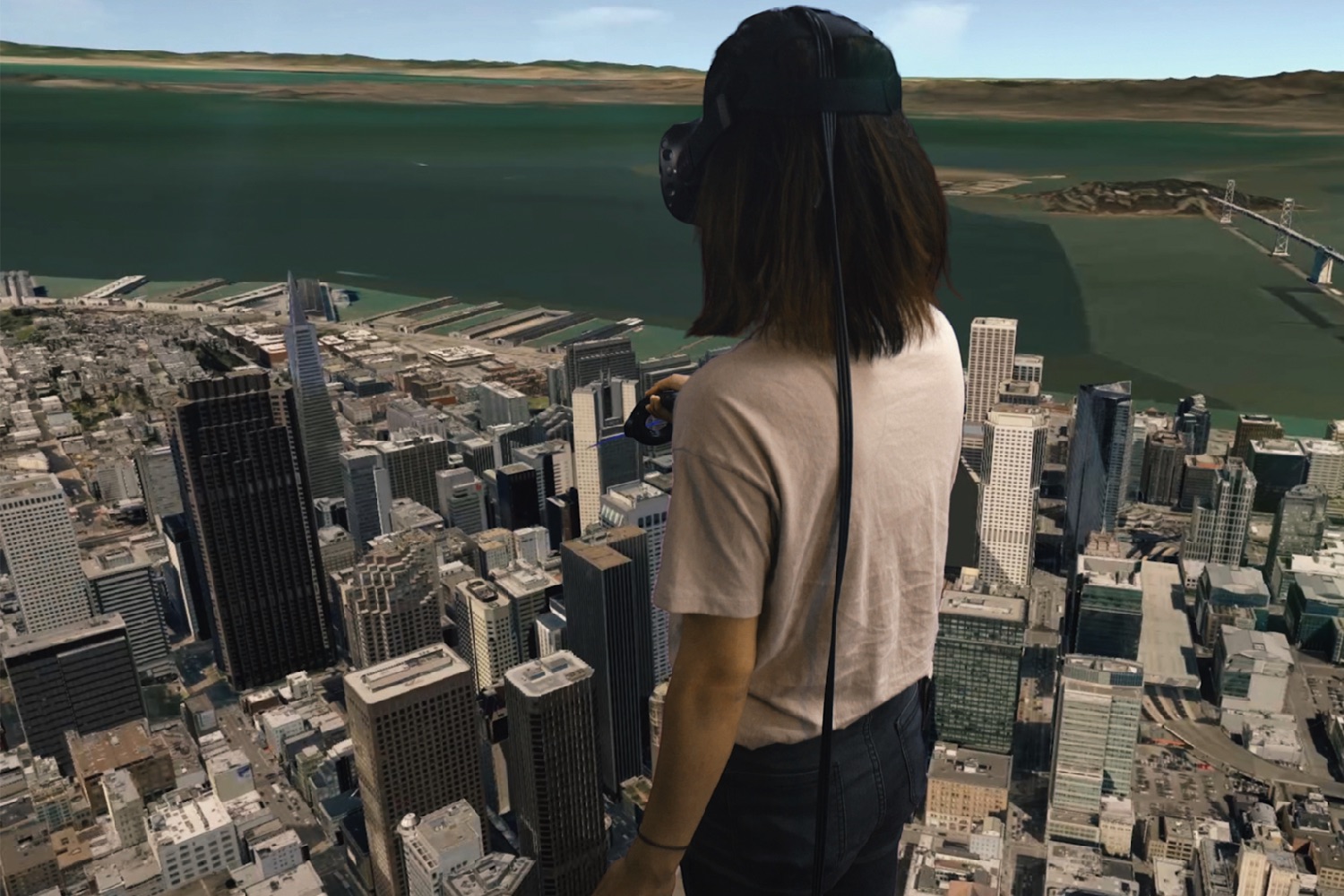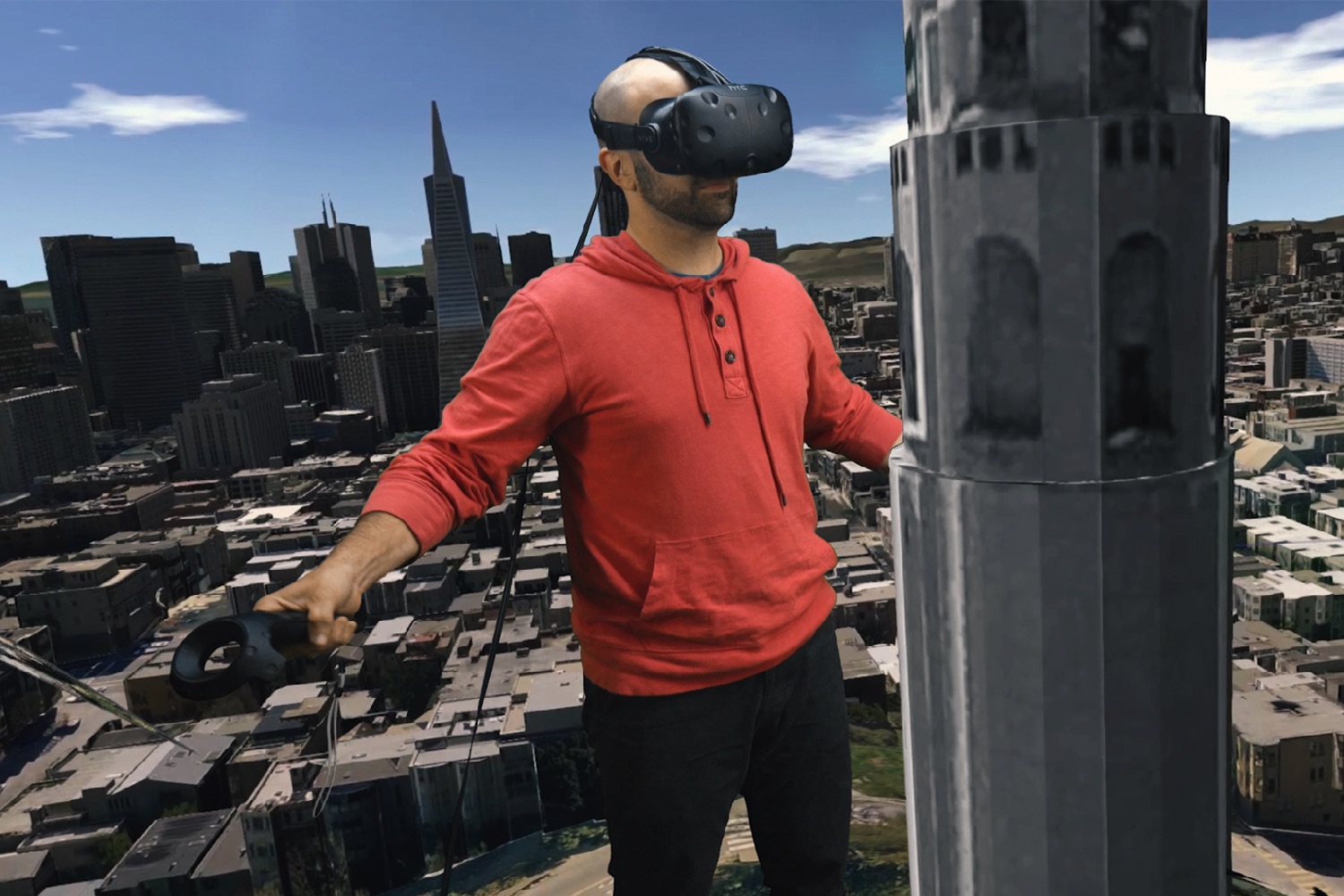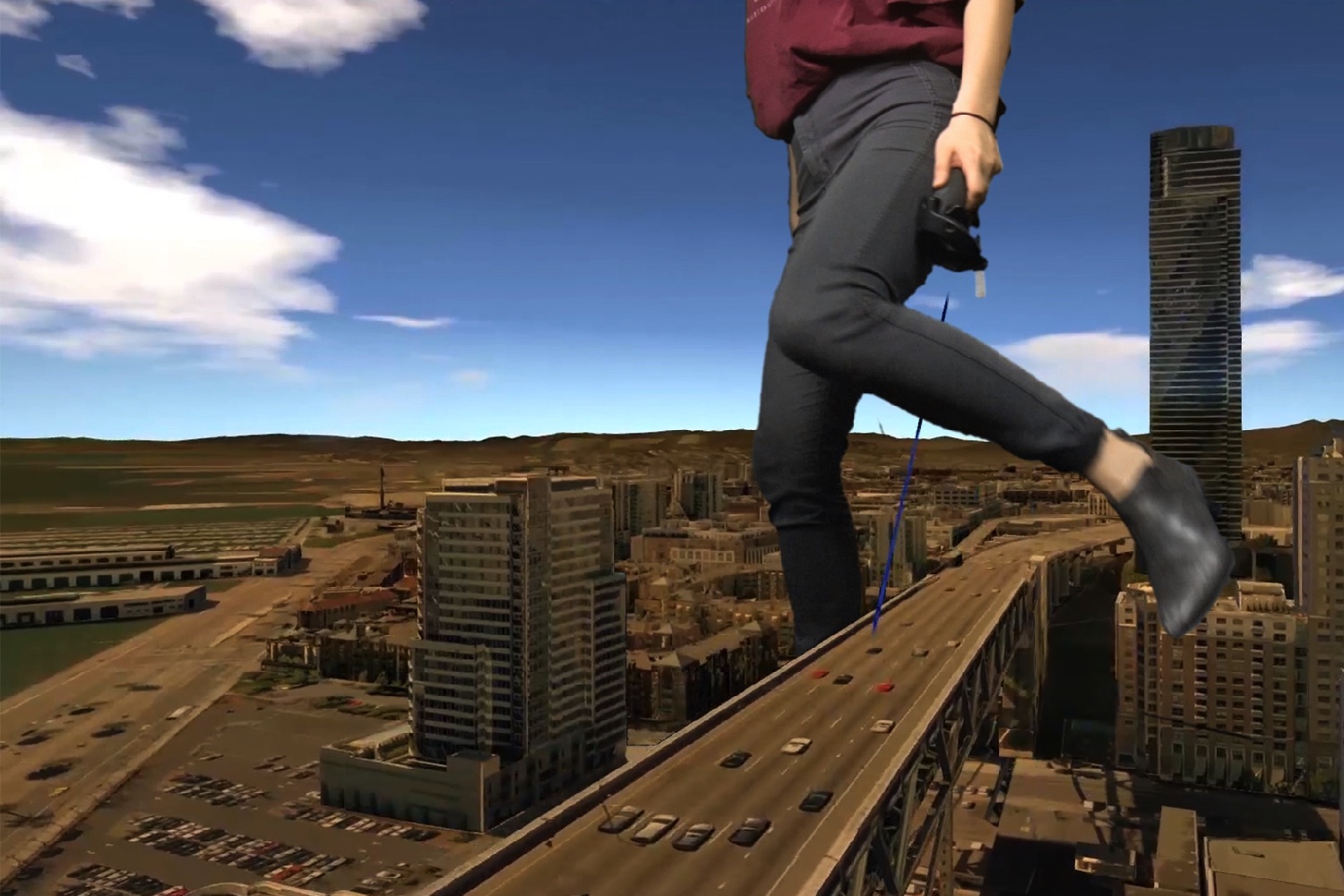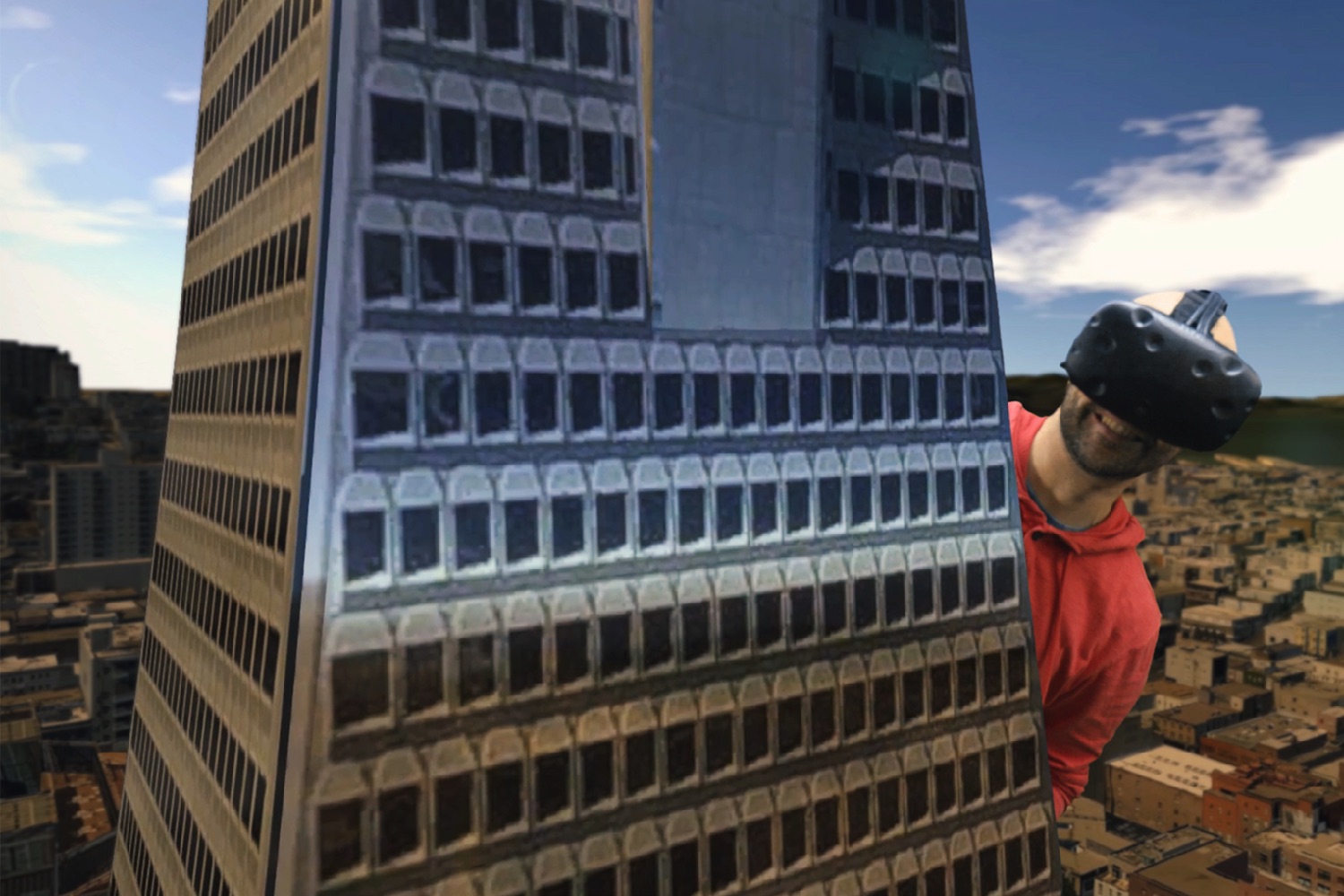Well, jump forward a decade and successful stints as a landscape photographer, data scientist and robotics expert, and the 27-year-old Hu has the means by which to make the dream a reality.
Using a combination of drone technology, satellite data, and HTC Vive hardware, Hu’s Amber Garage has launched its new City VR project, which lets users take a stroll through realistic 3D renderings of the world’s most bustling metropolises — and all in fully immersive virtual reality.
“The 3D models in City VR comes from a combination of Amber Garage’s own aerial photogrammetry technology and third-party model provider PLW,” Amber told Digital Trends. “Amber Garage developed the real-time self-awareness navigation algorithm for an attached onboard drone computer to explore and scan a specified area.”
Users aren’t stuck being giants, either, but can take a page out of Alice in Wonderland’s playbook by shrinking down or blowing themselves up to check out the city at different scales. At present, only San Francisco is available for users to access, but there are plans for New York and Chicago to follow in short order.
In addition to being a neat experience, it’s also an impressive demo of Amber Garage’s “Skywand” technology: an aerial-filming motion-control tool that makes it easy for users to fly drones through complex paths by placing key frames in the 3D virtual world. In addition to satellite images, the data gathered using Skywand was used to create the cityscapes seen in City VR.
“Our team members are experts in data science, robotics technology and human-computer interfaces,” Amber said. “But more importantly, we are all photographers and artists, who appreciate the nature, stunning landscapes, serendipity in life, and have a strong will to share what we see with others. We want to make our voice heard, and present to the public the possibilities of using current technology, such as virtual reality, augmented reality, robotic,s and drones. We are here to let everyone’s imagination fly, and make them [become a] reality.”






